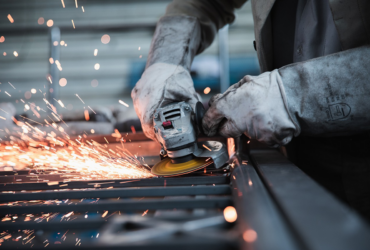In a promising turn of events for the U.S. economy, February saw a notable uptick in durable goods orders, signaling ongoing strength, particularly in the manufacturing sector. According to recent data released by the U.S. Department of Commerce, new orders for manufactured durable goods rose by 1.4% to reach $278 billion. This increase not only marks the first monthly rise in three months but also surpassed economists’ expectations, who had forecasted a more modest 1.0% rise.
The significance of this surge in durable goods orders extends beyond mere numbers. Durable goods, which are products designed to last for an extended period, such as automobiles, appliances, and machinery, serve as a key indicator of consumer and business confidence. The uptick in orders suggests a growing optimism among consumers and businesses alike, reflecting positively on the overall economic outlook.
Breaking down the data further, the increase in durable goods orders was not solely attributed to a specific sector but was rather broad-based. Excluding the volatile transportation sector, orders for manufactured goods still advanced by a solid 0.5%, indicating a healthy demand across various industries. Furthermore, the core durable goods orders, which exclude both transportation and defense, saw a significant uptick of 0.7%, marking the first increase in three months.
Observers and economists alike view these figures as a promising sign that U.S. manufacturers might be on the path to recovery after a period of stagnation. The manufacturing sector, often considered the backbone of the economy, plays a pivotal role in driving growth, innovation, and job creation. A resurgence in manufacturing activity bodes well not only for the sector itself but also for the broader economy.
Several factors may have contributed to the uptick in durable goods orders. Record levels of consumer spending, supported by robust job growth and wage gains, have likely bolstered demand for durable goods. Additionally, ongoing efforts to revitalize domestic manufacturing, such as infrastructure investments and reshoring initiatives, may be starting to yield results.
However, challenges remain on the horizon. Persistent supply chain disruptions, rising inflationary pressures, and uncertainties surrounding global trade dynamics could pose risks to the continued recovery of the manufacturing sector. Moreover, the lingering effects of the pandemic, including potential flare-ups and subsequent restrictions, remain a source of concern.
The latest data on durable goods orders paints a positive picture of the economic landscape, with signs of resilience and strength, particularly in the manufacturing sector. While challenges persist, the upward trajectory of durable goods orders signals a promising path forward for the U.S. economy, bolstering hopes for a sustained recovery in the months ahead.





